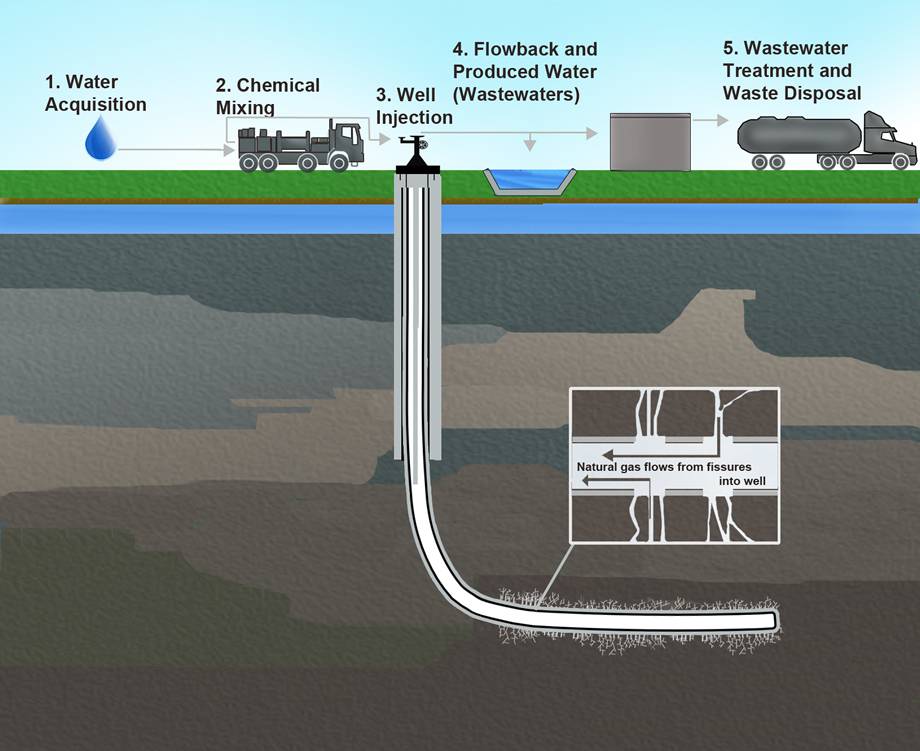What is Fracking?
 Hydraulic fracking, more commonly referred to as just “fracking,” is a complex drilling process used to release natural gases or oil.
Hydraulic fracking, more commonly referred to as just “fracking,” is a complex drilling process used to release natural gases or oil.
The fracking process begins when vertical wells are dug far into the earth to reach underground areas that contain a high quantity of gas or oil. Wells are dug hundreds to thousands of feet underground, and may include sections that extend horizontally for thousands of feet more.
Porous rocks like sandstone, limestone, or dolomite are often located at the bottom of these wells. However, the deepest wells usually end in shale rock, which is extremely hard to penetrate, making it even more necessary to use induced hydraulic fracking to get the most yield from the well.
In order to release oil or gas, fissures in the rock surrounding the well must be made.
Water is mixed with sand and chemicals to create a fluid. This fluid is then injected into the ground at high pressure, causing the rock to fracture, thereby increasing the flow of natural gases or oil. The fractures can be several hundred feet in length.
How does the fracking process affect drinking water quality?
Up to 600 chemicals are used in fracking fluid. Many of these have the potential to be harmful to humans and wildlife, a few of which are: mercury, benzene, lead, and uranium.
Approximately 40,000 gallons of chemicals are used for each fracking. After the process, the pressure of the rock formation causes the fluid to return to the surface, though only 30-50% of it is recovered. That makes for 12,000 to 20,000 gallons of chemicals left in the ground. Also, the recovered fluid is sometimes injected back into the ground for disposal, instead of being taken to a wastewater treatment facility.
When these chemicals are present in the ground, they have the ability to spread into the soil and water surrounding the well and rock. There have been many reports of nearby water wells and reservoirs becoming contaminated due to fracking.




